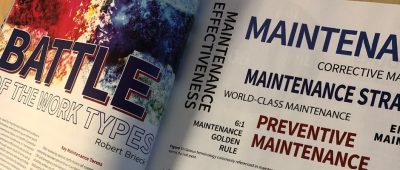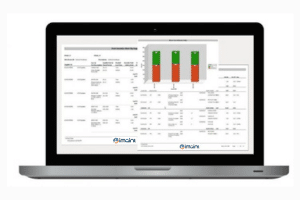If you use computerized maintenance management software (CMMS) or enterprise asset management (EAM) software to track maintenance functions, work orders can help you maintain detailed records. CMMS software work orders are used to formally request maintenance work that needs to be performed. Work orders also allow maintenance teams to share important information about the task with one another.
Assigning type to work orders can help you track the type of labor performed, determine work priorities and assign a critical rating to each piece of equipment. Gathering and analyzing data about work order type enables you to determine whether it’s best replace or repair a piece of equipment. For example, if a maintenance manager looks back on work orders and finds that a number of unexpected repairs have been performed on a particular asset, he or she may determine that it would be best to replace it. Below are the main types of work orders used in CMMS software.
Types of CMMS/EAM Software Work Orders:
General Work Order
A general work order is any maintenance task that isn’t considered a preventive maintenance, inspection, emergency, or corrective maintenance task. General work orders may include tasks like setting up new equipment, dismantling old equipment or painting walls, for example.
Preventive Maintenance
A preventive maintenance work order is a scheduled routine maintenance task performed on individual assets or groups of assets. Preventive maintenance keeps equipment in its existing state and prevents deterioration or failure. Preventive work orders define resource requirements, instructions, checklists and notes for each task.
You must associate a preventive maintenance work order with a schedule to ensure the maintenance task is performed at a specific time interval, such as every 180 days, or in the case of fleet maintenance, after a set number of miles. Preventive maintenance is carried out on all items for which a failure would have serious consequences.
Inspection
An inspection work order requires a maintenance technician to audit or inspect an asset based on a predetermined set of parameters. Inspections are usually time-based. During an inspection, a maintenance technician may identify a problem and then create a new work order to correct that problem.
Emergency
An emergency work order is generated when an unscheduled breakdown occurs and an asset needs to be repaired right away. An emergency work order is used to record and track any reactive work performed that was not planned beforehand. Once the work is complete, the maintenance technician can provide information in the work order about what happened, why the breakdown occurred, what was done about it, and what can be done to prevent it from occurring again.
Corrective Maintenance
A corrective maintenance work order is generated when a maintenance technician discovers a problem while completing a preventive maintenance, inspection, general or emergency work order. Corrective maintenance is performed to identify, isolate and rectify a fault so that the equipment, machine or system can be restored to its original condition. Unlike an emergency work order, a corrective maintenance work order is planned and scheduled because the failure was identified in time. A corrective maintenance work order may consist of the repair, restoration or replacement of equipment.
CMMS Software Work Orders: Conclusion
Tracking different types within work order management software will help your organization lower costs and improve the efficiency of assets. Preventive maintenance activities also enhance compliance activities and create a safer working environment. Contact DPSI today if you’d like to sign up for a free trial of our industry-leading CMMS and EAM software solutions.
Learn More via Reliability Web
Battle of the Work Types
By Robert Brieck, DPSI Consultant

Terminology used by maintenance departments produce a wealth of information when performing an Internet search. World-class maintenance status, cost benefits of preventive maintenance vs. corrective maintenance, 6:1 maintenance golden rule and maintenance effectiveness are just a few examples. As you scan through search results for terms such as these, you’ll come across professional articles, opinions, exercises and infinite calls to action inviting searchers to contact an organization for additional information. You will likely find guarantees to improve your maintenance operations and overall bottom line by following recommendations. However, what you likely won’t find is a clear-cut understanding of the differences between these maintenance terms due to a lack of consistency among sources. […]




